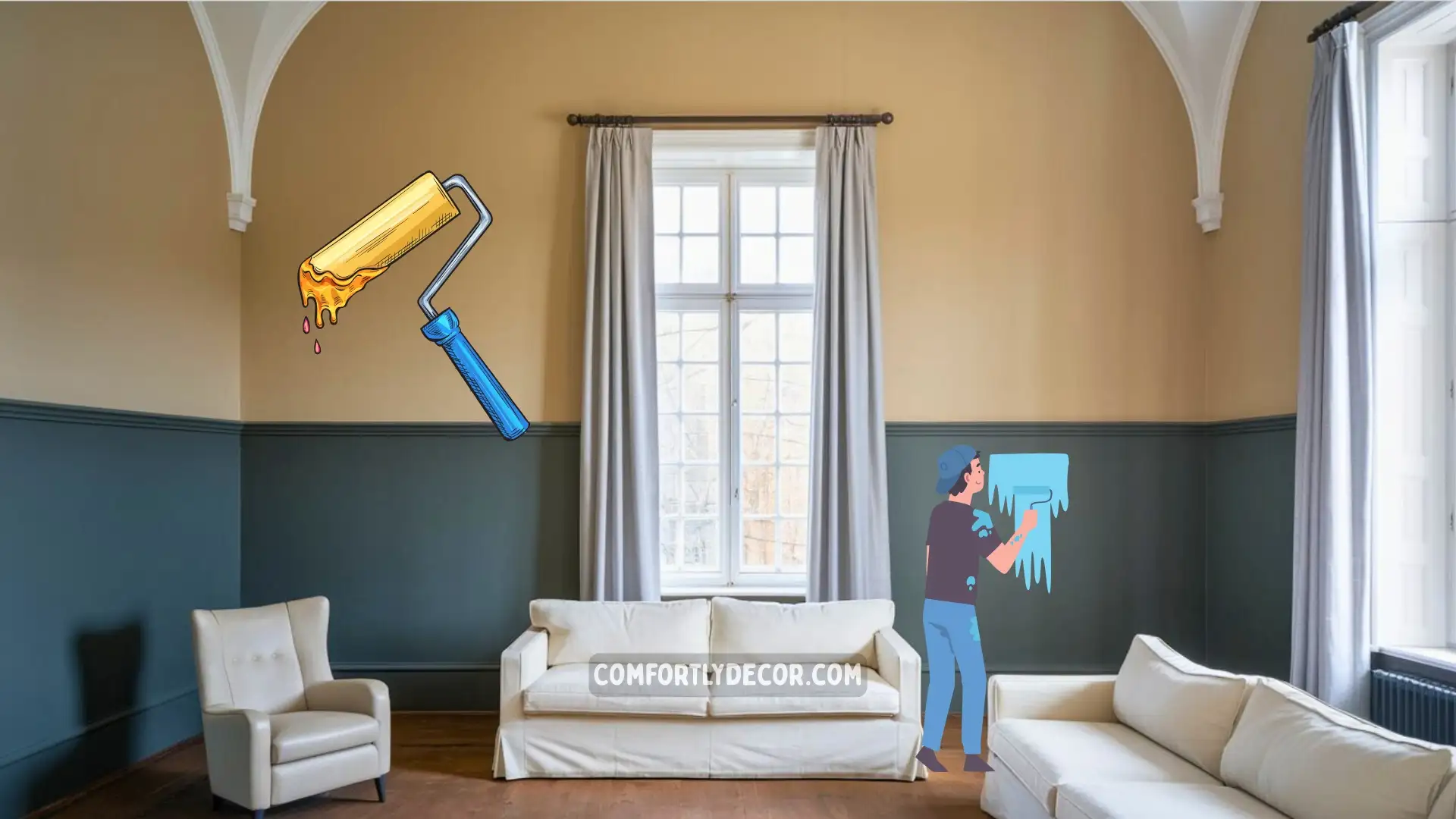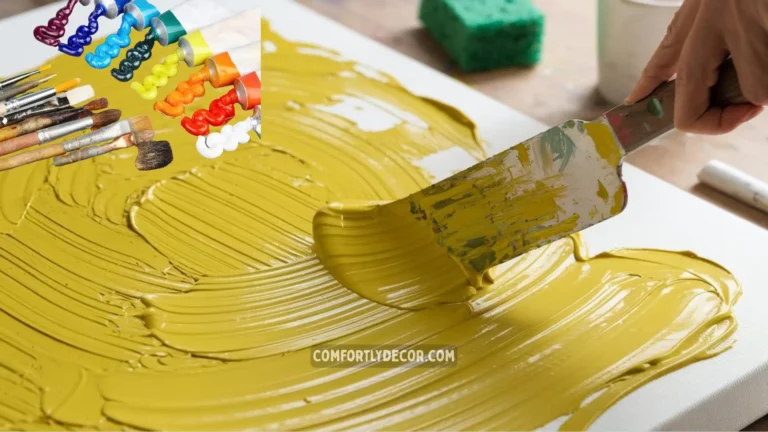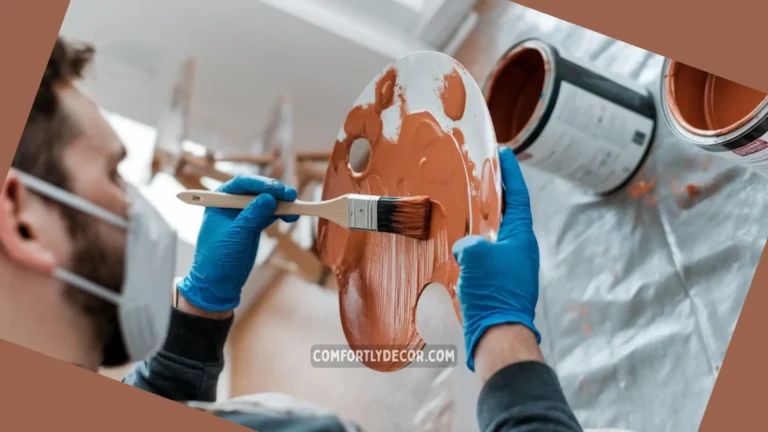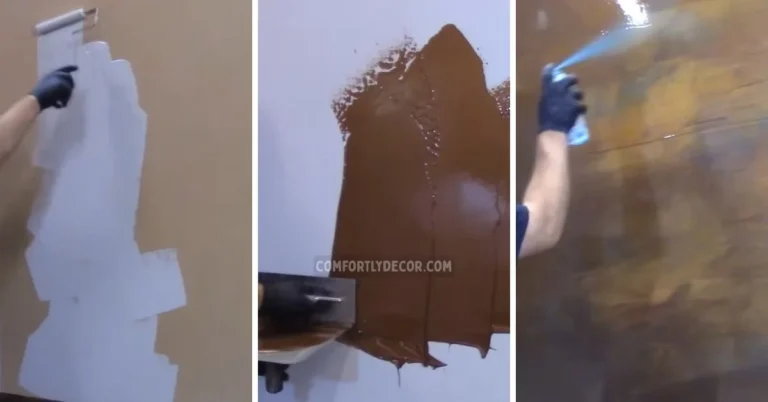How To Paint A Room With Two Colors || 6-Step Guide
Want to give your room a fresh new look without committing to a single color? Painting a room with two colors is a great way to elevate your space, add depth, and express creativity. From accent walls to two-tone designs, using multiple colors can completely transform even the most mundane of rooms. Don’t worry if you’re new to the concept—we’ve got you covered!
Let’s walk you through everything you need to know, from choosing the perfect colors to achieving a flawless finish. By the end, you’ll have all the tips you need to paint your room like a pro.
Why Paint with Two Colors?
You may be wondering, “Why two colors instead of one?” Glad you asked!
Using two colors adds character and dimension to your room, especially if you’re working with a bland or uninspiring space. Here are a few reasons why two-tone painting might be perfect for you:
- Creates Visual Interest: Two colors can highlight architectural details, like crown molding or wainscoting, giving your room a designer touch.
- Defines Space: Differentiate one part of a room from another, such as a dining nook in a larger living space.
- Sets the Mood: Warm and cool tones can work together to balance the ambiance of the room.
- On-Trend Appeal: Two-tone walls are modern, chic, and won’t go out of style anytime soon.
Now that you know why you should try two-tone painting, let’s get you started.
Tools and Materials You’ll Need
Before you begin, make sure you have the right supplies on hand. Trust me, stopping mid-project to hunt for tape is a total vibe killer. Here’s your checklist:
Tools:
- Paint rollers (and spare covers for precise edges)
- Angled paintbrush for sharp corners
- Painter’s tape (don’t skimp on quality!)
- Level or laser guide
- Drop cloths or old sheets
- Step ladder for those hard-to-reach areas
Materials:
- Your two chosen paint colors
- Primer (especially if you’re painting over a dark wall)
- Paint tray with a liner
- Sandpaper or a sanding block (for smooth surfaces)
- Stir sticks
- Damp rags for quick cleanup
Once you’ve gathered your materials, it’s time to prep the room.
Step 1 – Choose Your Colors Wisely
Painting with two colors requires a little planning to ensure the combo works harmoniously. Here’s how to select the perfect pair:
Start with the Palette
First, decide on the mood or style you want for the room. For a bold, striking look, go for contrasting colors, such as navy blue and crisp white. Want something softer? A light gray paired with blush pink creates a calm and soothing atmosphere.
Stick to Ratios
The 60-30-10 rule is a design classic for a reason. Make one color the star (60%), the other a complement (30%), and save 10% for accents like decor.
Test, Don’t Guess
Lighting plays a huge role in how colors appear. Paint swatches on your wall and observe them throughout the day to see how they look in natural and artificial light.
Pro Tip: If you’re overwhelmed, check out online tools or apps that suggest color schemes based on your starting shade.
Step 2 – Prep Your Room
No, this isn’t the fun part, but trust me, prep work is EVERYTHING when it comes to creating a clean, professional finish.
Clear the Space
Remove furniture, decorations, and switch plates. If something’s too heavy to move, cover it with a drop cloth or sheet.
Clean the Walls
Use a damp cloth or sponge to wipe down your walls, removing dust and grease. Grease is not your friend when it comes to even coverage.
Tape Off Areas
Apply painter’s tape to edges, trim, and even along where the two colors will meet. Want a horizontal split? Use a level or laser guide for a perfectly straight line.
Prime as Needed
If your walls feature dark paint, stains, or high-gloss finishes, don’t skip priming. It will help even out your base layer for a smooth application.
Step 3 – Decide on the Style
When it comes to painting with two colors, the possibilities are endless. Here are some popular options to consider:
Horizontal Split
One of the most common methods is to split the wall horizontally, with the lighter color on top. This makes the ceiling feel taller and the room more open.
Vertical Blocks
Perfect for highlighting specific areas or creating a modern art-inspired space. Experiment with bold vertical stripes in contrasting hues.
Accent Wall
Dedicate one feature wall to your boldest color. This choice draws attention to that area without overwhelming the room.
Subtle Transitions
Blend two shades of the same color family for an ombre-inspired look. This can work beautifully in bedrooms or nurseries. (It may take a little extra effort, but the payoff is worth it!)
Step 4 – Paint the First Color
Start with the color that takes up the larger portion of the wall (your 60% from the 60-30-10 ratio).
- Cut in First: Use an angled brush to paint edges and corners. Cutting in ensures precision and keeps mistakes to a minimum!
- Roll On the Paint: Grab your roller and start with slow, even strokes. Roll in a “W” pattern to avoid streaks or visible lines.
- Wait Patiently: No one likes a smudgy mess. Wait for the first coat to dry completely before adding a second. Usually, one to two hours will do.
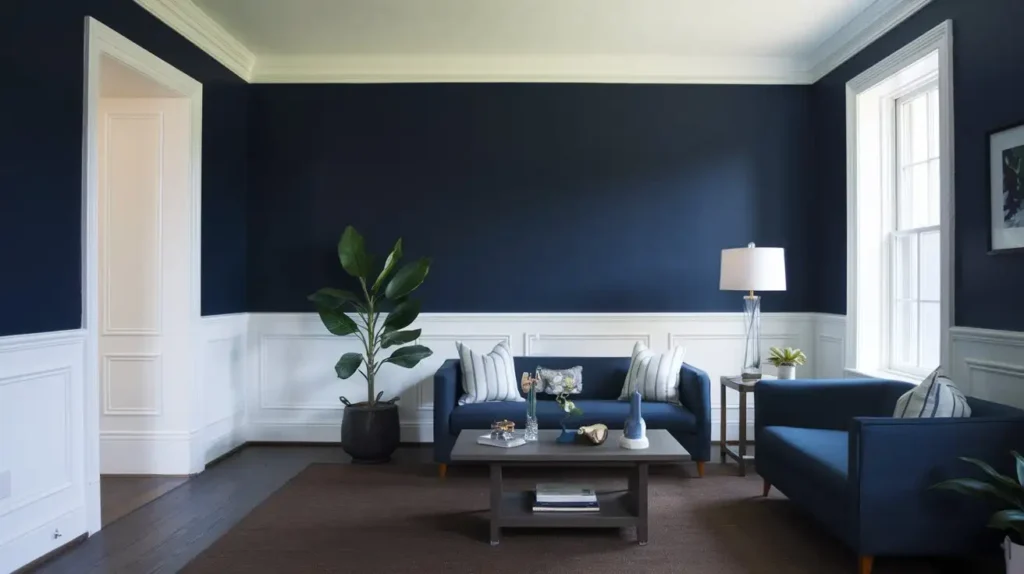
Step 5 – Apply the Second Color
Once the first color is completely dry, it’s time to tackle the second.
Tape Off the Area
Using your guide or level, carefully tape where the two colors will meet. Press down firmly to avoid paint bleeding into unwanted areas.
Cut and Roll
Just like the first color, use an angled brush to cut in before using a roller. Blend carefully along the edges and avoid applying too much pressure on the tape. This will prevent the paint from seeping underneath.
Remove the Tape
Here’s where the magic happens. While the paint is still semi-dry, peel off the tape at a 45-degree angle. This will leave you with crisp, clean lines.
Pro Tip: If paint does bleed, don’t panic. Use a small brush to touch it up once everything has dried.
Step 6 – Finishing Touches
Now that your walls are painted, it’s time to bring the room together.
- Inspect the room for any missed spots or uneven areas and touch them up.
- Reassemble the space by bringing back furniture and decorations.
- Decorate Smart by using your new color palette to pick accent objects like cushions, curtains, or frames.
And voila! You’ve just breathed new life into your room with minimal effort and a lot of personality.
FAQs
Final Thoughts
Painting a room with two colors isn’t just a DIY project; it’s a chance to express creativity while elevating your home’s style. With the right prep, materials, and techniques, you’ll be staring at your walls in admiration for years to come.
Still debating on which colors to choose? Share your ideas in the comments below! If you’re ready to get started, grab some paint and tackle your next masterpiece today.

Vibe Up Your Space With Comfort & Color — your go-to destination for stylish home decor that blends comfort with color. Create cozy corners and vibrant vibes in every room and space at your home!
